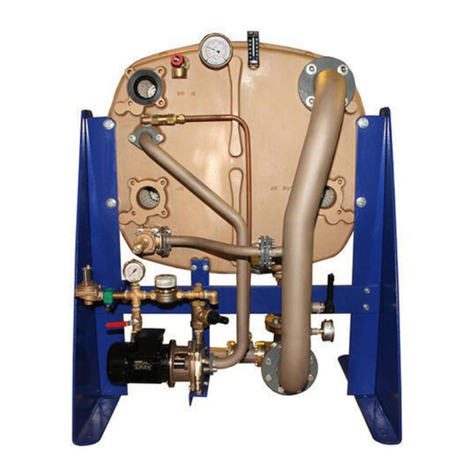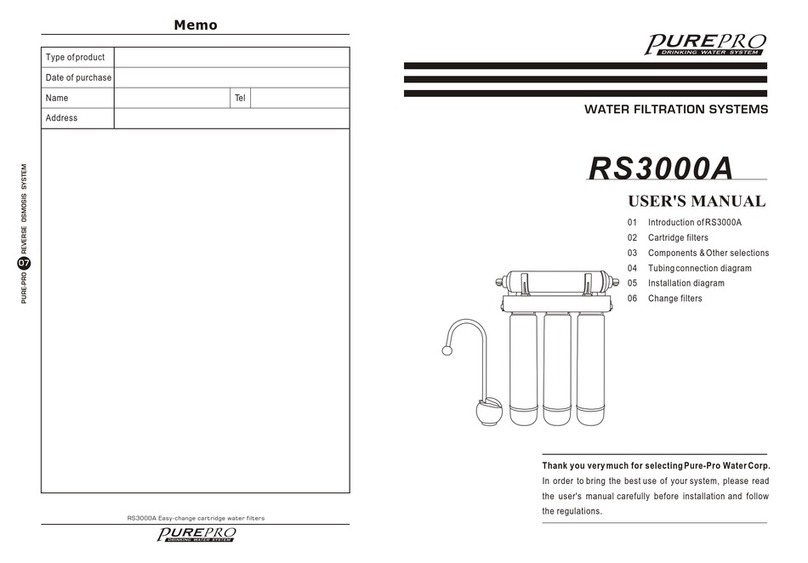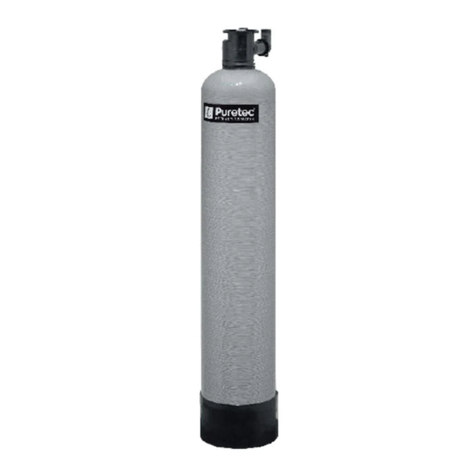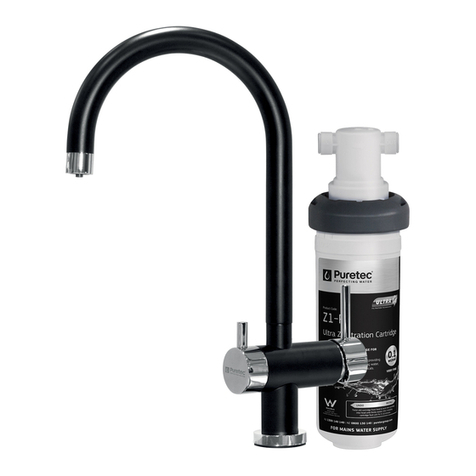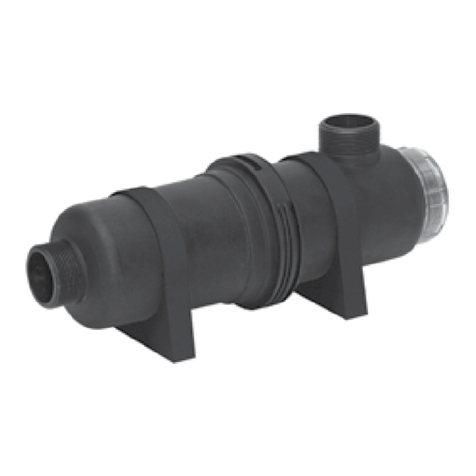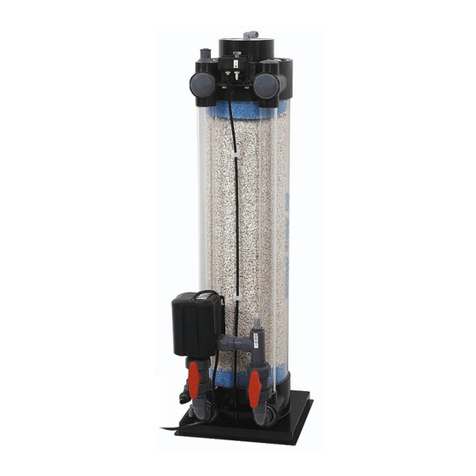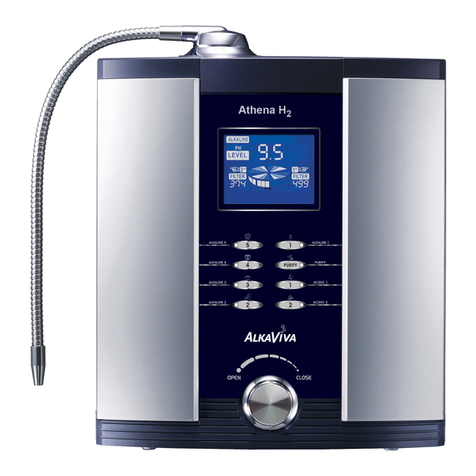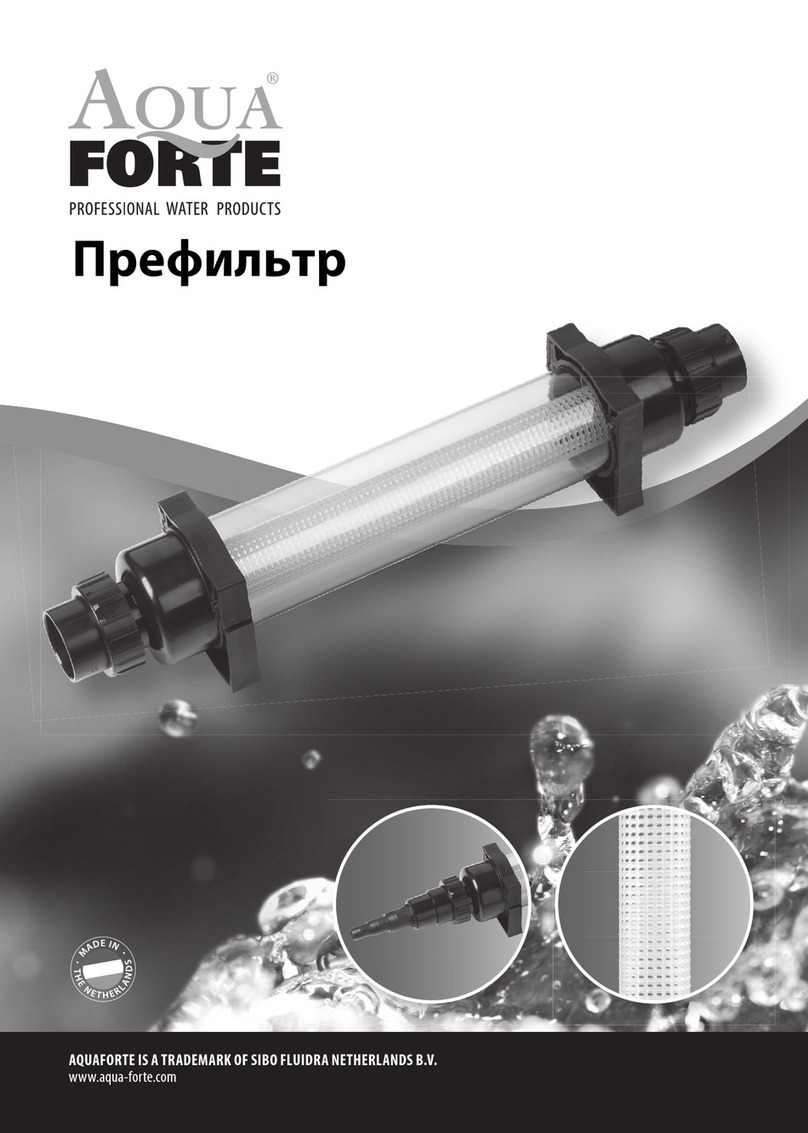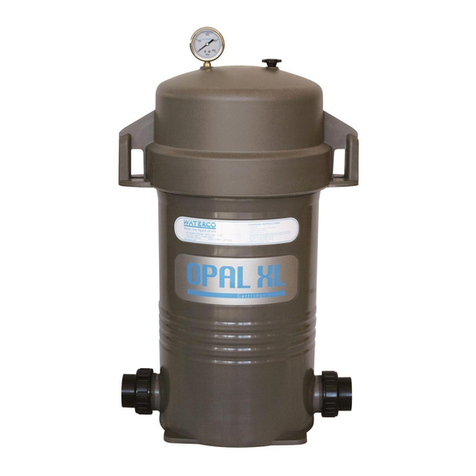Thermo King TriPac DPF User manual

Thermo King has a policy of coninuous product and data improvements and reserves the right to change design and specications without notice. We are
committed to using environmentally conscious print practices.
Thermo King – by Trane Technologies (NYSE: TT), a global climate innovator – is a worldwide leader in sustainable
transport temperature control solutions. Thermo King has been providing transport temperature control solutions
for a variety of applications, including trailers, truck bodies, buses, air, shipboard containers and railway cars since
1938. For more information, visit www.thermoking.com or www.tranetechnologies.com
©2020 Trane Technologies
TK 53925-19-OP Sep 2011
Operator’s Manual
TriPac™
Diesel Particulate Filter
(DPF)
September 2011
Revision 2
TK-53925-19-OP


Copyright© 2008 Thermo King Corp., Minneapolis, MN, USA
Printed in USA
TriPac
Diesel Particulate Filter
(DPF)
TK 53925-19-OP (Rev. 2, 09/11)
Copyright© 2008 Thermo King Corp., Minneapolis, MN, USA
Printed in USA
TriPac
Diesel Particulate Filter
(DPF)
TK 53925-19-OP (Rev. 2, 09/11)

Disclaimer
This manual is published for informational purposes only. Thermo King Corporation makes no
representations or warranties, express or implied, with respect to the information, recommendations and
descriptions contained in this manual and such information, recommendations and descriptions should
not be regarded as all-inclusive or covering all contingencies. If you have questions or require further
information, please contact your local Thermo King dealer.
The procedures described herein should be undertaken only by qualified personnel. Failure to implement
these procedures correctly may cause damage to the Thermo King unit or other property or personal
injury.
Thermo King Corporation and its affiliates shall have no liability in contract or tort (including negligence
and/or strict liability) or otherwise, to any person or entity for any personal injury, property damage or any
other direct, indirect, special or consequential damage or liability whatsoever, arising out of or resulting
from any actions by any person that are contrary to this manual or any of the information,
recommendations or descriptions contained herein or the failure of any person to implement the
procedures described herein correctly or to follow caution and safety decals located on the Thermo King
unit.
Disclaimer
This manual is published for informational purposes only. Thermo King Corporation makes no
representations or warranties, express or implied, with respect to the information, recommendations and
descriptions contained in this manual and such information, recommendations and descriptions should
not be regarded as all-inclusive or covering all contingencies. If you have questions or require further
information, please contact your local Thermo King dealer.
The procedures described herein should be undertaken only by qualified personnel. Failure to implement
these procedures correctly may cause damage to the Thermo King unit or other property or personal
injury.
Thermo King Corporation and its affiliates shall have no liability in contract or tort (including negligence
and/or strict liability) or otherwise, to any person or entity for any personal injury, property damage or any
other direct, indirect, special or consequential damage or liability whatsoever, arising out of or resulting
from any actions by any person that are contrary to this manual or any of the information,
recommendations or descriptions contained herein or the failure of any person to implement the
procedures described herein correctly or to follow caution and safety decals located on the Thermo King
unit.

1
Table of Contents
Introduction . . . . . . . . . . . . . . . . . . . . . . . . . . . . . . . . . 3
Safety Precautions . . . . . . . . . . . . . . . . . . . . . . . . . . . 5
Electrical Hazard . . . . . . . . . . . . . . . . . . . . . . . . . . . . . . 5
Burn Hazard . . . . . . . . . . . . . . . . . . . . . . . . . . . . . . . . . 6
Fire Hazard . . . . . . . . . . . . . . . . . . . . . . . . . . . . . . . . . . 6
Hazardous Material . . . . . . . . . . . . . . . . . . . . . . . . . . . . 6
DPF Description . . . . . . . . . . . . . . . . . . . . . . . . . . . . . 7
Design Features & Components . . . . . . . . . . . . . . . . . . 8
Protection Devices . . . . . . . . . . . . . . . . . . . . . . . . . . . 12
Manual Pretrip Inspection . . . . . . . . . . . . . . . . . . . . 15
DPF Operation . . . . . . . . . . . . . . . . . . . . . . . . . . . . . . 17
Turning the Switches ON . . . . . . . . . . . . . . . . . . . . . . 17
Indicator Light System . . . . . . . . . . . . . . . . . . . . . . . . 20
Amber Indicator Lights . . . . . . . . . . . . . . . . . . . . . 21
Red Indicator Light . . . . . . . . . . . . . . . . . . . . . . . . 21
No Indicator Lights . . . . . . . . . . . . . . . . . . . . . . . . 22
Indicator Light Quick Reference Chart . . . . . . . . . 23
Initiating a Regeneration . . . . . . . . . . . . . . . . . . . . . . . 24
Cancelling a Regeneration . . . . . . . . . . . . . . . . . . . . . 26
Fault Codes . . . . . . . . . . . . . . . . . . . . . . . . . . . . . . . .27
Clearing Fault Codes . . . . . . . . . . . . . . . . . . . . . . . . . .30
Specifications . . . . . . . . . . . . . . . . . . . . . . . . . . . . . . .31
Electrical Control System . . . . . . . . . . . . . . . . . . . . . . .31
Engine Operation . . . . . . . . . . . . . . . . . . . . . . . . . . . . .32
Maintenance Inspection Schedule . . . . . . . . . . . . . .33
Warranty . . . . . . . . . . . . . . . . . . . . . . . . . . . . . . . . . . .37
DPF Serial Plate Locations . . . . . . . . . . . . . . . . . . . .41
Emergency Cold Line . . . . . . . . . . . . . . . . . . . . . . . .43
CALIFORNIA
Proposition 65 Warning . . . . . . . . . . . . . . . . . . . . . . .44
1
Table of Contents
Introduction . . . . . . . . . . . . . . . . . . . . . . . . . . . . . . . . . 3
Safety Precautions . . . . . . . . . . . . . . . . . . . . . . . . . . . 5
Electrical Hazard . . . . . . . . . . . . . . . . . . . . . . . . . . . . . . 5
Burn Hazard . . . . . . . . . . . . . . . . . . . . . . . . . . . . . . . . . 6
Fire Hazard . . . . . . . . . . . . . . . . . . . . . . . . . . . . . . . . . . 6
Hazardous Material . . . . . . . . . . . . . . . . . . . . . . . . . . . . 6
DPF Description . . . . . . . . . . . . . . . . . . . . . . . . . . . . . 7
Design Features & Components . . . . . . . . . . . . . . . . . . 8
Protection Devices . . . . . . . . . . . . . . . . . . . . . . . . . . . 12
Manual Pretrip Inspection . . . . . . . . . . . . . . . . . . . . 15
DPF Operation . . . . . . . . . . . . . . . . . . . . . . . . . . . . . . 17
Turning the Switches ON . . . . . . . . . . . . . . . . . . . . . . 17
Indicator Light System . . . . . . . . . . . . . . . . . . . . . . . . 20
Amber Indicator Lights . . . . . . . . . . . . . . . . . . . . . 21
Red Indicator Light . . . . . . . . . . . . . . . . . . . . . . . . 21
No Indicator Lights . . . . . . . . . . . . . . . . . . . . . . . . 22
Indicator Light Quick Reference Chart . . . . . . . . . 23
Initiating a Regeneration . . . . . . . . . . . . . . . . . . . . . . . 24
Cancelling a Regeneration . . . . . . . . . . . . . . . . . . . . . 26
Fault Codes . . . . . . . . . . . . . . . . . . . . . . . . . . . . . . . .27
Clearing Fault Codes . . . . . . . . . . . . . . . . . . . . . . . . . .30
Specifications . . . . . . . . . . . . . . . . . . . . . . . . . . . . . . .31
Electrical Control System . . . . . . . . . . . . . . . . . . . . . . .31
Engine Operation . . . . . . . . . . . . . . . . . . . . . . . . . . . . .32
Maintenance Inspection Schedule . . . . . . . . . . . . . .33
Warranty . . . . . . . . . . . . . . . . . . . . . . . . . . . . . . . . . . .37
DPF Serial Plate Locations . . . . . . . . . . . . . . . . . . . .41
Emergency Cold Line . . . . . . . . . . . . . . . . . . . . . . . .43
CALIFORNIA
Proposition 65 Warning . . . . . . . . . . . . . . . . . . . . . . .44

Table of Contents
2
Table of Contents
2

3
Introduction
Taking the time to read this manual will help in understanding
how to properly operate, service and maintain your Thermo
King Diesel Particulate Filter (DPF) system.
Performing pre-trip checks and enroute inspections on a
regular basis will minimize on-the-road operating problems.
A regular maintenance program will also help to keep your
DPF system in top operating condition. When factory
recommended procedures are followed, you will find that you
have purchased the most efficient and dependable diesel
particulate filter system available.
All service requirements, major and minor, should be handled
by a Thermo King dealer for four very important reasons:
• They are equipped with the factory recommended tools to
perform all service functions
• They have factory trained and certified technicians
• They have genuine Thermo King replacement parts
• The warranty on your new DPF system is valid only when
the repair and replacement of component parts is
performed by an authorized Thermo King dealer.
When the DPF system and it’s components are installed onto a
Thermo King TriPac APU diesel engine, the emission control
level will conform to the California Air Resource Board
(CARB) Airborne Toxic Control Measure (ATCM), and is
warranted for a period of 3-years or 1600- hours, which ever
comes first, as it applies to Auxiliary Power Units (APU). See
“Warranty” on page 37 for complete details.
IMPORTANT: This manual is published for informational
purposes only and the information furnished herein should
not be considered as all-inclusive or meant to cover all
contingencies. If more information is required, consult your
Thermo King Service Directory for the location and
telephone number of the local dealer.
3
Introduction
Taking the time to read this manual will help in understanding
how to properly operate, service and maintain your Thermo
King Diesel Particulate Filter (DPF) system.
Performing pre-trip checks and enroute inspections on a
regular basis will minimize on-the-road operating problems.
A regular maintenance program will also help to keep your
DPF system in top operating condition. When factory
recommended procedures are followed, you will find that you
have purchased the most efficient and dependable diesel
particulate filter system available.
All service requirements, major and minor, should be handled
by a Thermo King dealer for four very important reasons:
• They are equipped with the factory recommended tools to
perform all service functions
• They have factory trained and certified technicians
• They have genuine Thermo King replacement parts
• The warranty on your new DPF system is valid only when
the repair and replacement of component parts is
performed by an authorized Thermo King dealer.
When the DPF system and it’s components are installed onto a
Thermo King TriPac APU diesel engine, the emission control
level will conform to the California Air Resource Board
(CARB) Airborne Toxic Control Measure (ATCM), and is
warranted for a period of 3-years or 1600- hours, which ever
comes first, as it applies to Auxiliary Power Units (APU). See
“Warranty” on page 37 for complete details.
IMPORTANT: This manual is published for informational
purposes only and the information furnished herein should
not be considered as all-inclusive or meant to cover all
contingencies. If more information is required, consult your
Thermo King Service Directory for the location and
telephone number of the local dealer.

Introduction
4
Introduction
4

5
Safety Precautions
Thermo King recommends that servicing be done only by an
authorized Thermo King dealer. However, there are several
general safety precautions that you should become familiar
regarding the Thermo King Diesel Particulate Filter (DPF).
Additional safety warnings and precautions regarding the
operation of the Thermo King TriPac unit can be found in the
TriPac Operator’s manual TK-53035-19-OP.
Electrical Hazard
DANGER: Always turn the TriPac Main Power
On/Off Key on the HMI Controller OFF while
refueling the truck. Fuel vapors could ignite if they
come in contact with hot TriPac Diesel Particulate
Filter (DPF).
WARNING: Turn the TriPac unit On/Off switch to
the Off position before inspecting any part of the APU
or the Diesel Particulate Filter (DPF) components.
WARNING: Disconnect the positive power cable
from the truck’s battery to the Diesel Particulate
Filter (DPF) before servicing any of it’s
components.
5
Safety Precautions
Thermo King recommends that servicing be done only by an
authorized Thermo King dealer. However, there are several
general safety precautions that you should become familiar
regarding the Thermo King Diesel Particulate Filter (DPF).
Additional safety warnings and precautions regarding the
operation of the Thermo King TriPac unit can be found in the
TriPac Operator’s manual TK-53035-19-OP.
Electrical Hazard
DANGER: Always turn the TriPac Main Power
On/Off Key on the HMI Controller OFF while
refueling the truck. Fuel vapors could ignite if they
come in contact with hot TriPac Diesel Particulate
Filter (DPF).
WARNING: Turn the TriPac unit On/Off switch to
the Off position before inspecting any part of the APU
or the Diesel Particulate Filter (DPF) components.
WARNING: Disconnect the positive power cable
from the truck’s battery to the Diesel Particulate
Filter (DPF) before servicing any of it’s
components.

Safety Precautions
6
Burn Hazard
Fire Hazard
Hazardous Material
WARNING: The Diesel Particulate Filter (DPF)
canister, exhaust system components and exhaust
discharge at the tail pipe can get extremely hot and
could cause serious burns to the skin.
WARNING: The Diesel Particulate Filter (DPF)
canister, exhaust system components and exhaust
discharge at the tail pipe can get extremely hot and
could ignite a fire if placed in close proximity with
combustibles such as dry grass, paper or leaves.
WARNING: The Diesel Particulate Filter (DPF)
accumulates ash that may be considered hazardous
material and must be disposed of in accordance with
all applicable Federal, State, and local laws.
Safety Precautions
6
Burn Hazard
Fire Hazard
Hazardous Material
WARNING: The Diesel Particulate Filter (DPF)
canister, exhaust system components and exhaust
discharge at the tail pipe can get extremely hot and
could cause serious burns to the skin.
WARNING: The Diesel Particulate Filter (DPF)
canister, exhaust system components and exhaust
discharge at the tail pipe can get extremely hot and
could ignite a fire if placed in close proximity with
combustibles such as dry grass, paper or leaves.
WARNING: The Diesel Particulate Filter (DPF)
accumulates ash that may be considered hazardous
material and must be disposed of in accordance with
all applicable Federal, State, and local laws.

7
DPF Description
The Thermo King Diesel Particulate Filter (DPF) is designed
to reduce the particulate matter output from the TriPac APU’s
diesel engine. When the TriPac’s APU is operating, the DPF
control system monitors the APU’s diesel engine exhaust. The
DPF canister captures the particulate matter from the APU’s
engine exhaust and the control system alerts the driver when to
initiate the regeneration process to clean the particulate matter
(soot) from the filter. The driver initiates the regeneration by
activating the dash-mounted regeneration switch. After
approximately 1 to 2 hours, the regeneration process is
complete, the indicator lights go out and the APU is ready to
operate again. This process will be repeated after the APU has
been operated again for a period of time. The DPF system
replaces the standard APU muffler and exhaust system and
includes a Solid State Control Module, Valve Box, Exhaust
Monitor and a dash-mounted Regeneration Switch.
IMPORTANT: The DPF system operates using electrical
voltage supplied by the truck’s alternator system. Due to the
large current draw required by the DPF, the regeneration
process should only be initiated during daytime hours while
the truck is expected to be operating at highway speeds
(above 1150 rpm) for a minimum of one hour. Do not operate
the DPF while the truck is stopped, idling or moving slowly in
traffic. If this condition occurs, the regeneration process may
automatically be cancelled.
NOTE: The TriPac APU will be disabled when the DPF is in
the regeneration mode or if the DPF regeneration switch is in
the OFF position.
7
DPF Description
The Thermo King Diesel Particulate Filter (DPF) is designed
to reduce the particulate matter output from the TriPac APU’s
diesel engine. When the TriPac’s APU is operating, the DPF
control system monitors the APU’s diesel engine exhaust. The
DPF canister captures the particulate matter from the APU’s
engine exhaust and the control system alerts the driver when to
initiate the regeneration process to clean the particulate matter
(soot) from the filter. The driver initiates the regeneration by
activating the dash-mounted regeneration switch. After
approximately 1 to 2 hours, the regeneration process is
complete, the indicator lights go out and the APU is ready to
operate again. This process will be repeated after the APU has
been operated again for a period of time. The DPF system
replaces the standard APU muffler and exhaust system and
includes a Solid State Control Module, Valve Box, Exhaust
Monitor and a dash-mounted Regeneration Switch.
IMPORTANT: The DPF system operates using electrical
voltage supplied by the truck’s alternator system. Due to the
large current draw required by the DPF, the regeneration
process should only be initiated during daytime hours while
the truck is expected to be operating at highway speeds
(above 1150 rpm) for a minimum of one hour. Do not operate
the DPF while the truck is stopped, idling or moving slowly in
traffic. If this condition occurs, the regeneration process may
automatically be cancelled.
NOTE: The TriPac APU will be disabled when the DPF is in
the regeneration mode or if the DPF regeneration switch is in
the OFF position.

DPF Description
8
Design Features & Components
• Stainless Steel DPF canister and exhaust components
• Exhaust Monitor
• Dash mounted DPF Regeneration Switch
• Solid State Control Module with On-board Diagnostic
System.
• Vehicle mounted, corrosion resistant Valve Box.
• Heavy Duty components for over the road use.
DPF Canister
The DPF canister is typically mounted to the rear of the APU
in place of the standard exhaust and muffler system. The
exhaust particulate matter that is captured and retained in the
DPF canister is burned off during the regeneration process.
DPF canister mounted onto the rear of a TriPac APU
DPF Description
8
Design Features & Components
• Stainless Steel DPF canister and exhaust components
• Exhaust Monitor
• Dash mounted DPF Regeneration Switch
• Solid State Control Module with On-board Diagnostic
System.
• Vehicle mounted, corrosion resistant Valve Box.
• Heavy Duty components for over the road use.
DPF Canister
The DPF canister is typically mounted to the rear of the APU
in place of the standard exhaust and muffler system. The
exhaust particulate matter that is captured and retained in the
DPF canister is burned off during the regeneration process.
DPF canister mounted onto the rear of a TriPac APU

DPF Description
9
DPF Exhaust Monitor
The DPF Exhaust Monitor is typically mounted in the bunk
area of the tractor. Two indicator lights are displayed on the
monitor to alert the driver when to initiate a regeneration, when
a regeneration is in process, or when a fault has been detected
by the on-board diagnostic system. These lights not only help
the driver determine when to initiate the regeneration, but also
identify any problems that may have been detected by the
on-board diagnostic system. The red DPF Fault and amber
DPF Status indicator lights are displayed on the Exhaust
Monitor, while only the amber DPF Status indicator light is
displayed on the Regeneration Switch.
When no indicator light is displayed, the DPF system has not
detected any need to initiate a regeneration and the TriPac APU
can be operated as usual.
.
DPF Exhaust Monitor
Red DPF Fault Indicator Light
Amber DPF Status Indicator Light
DPF Description
9
DPF Exhaust Monitor
The DPF Exhaust Monitor is typically mounted in the bunk
area of the tractor. Two indicator lights are displayed on the
monitor to alert the driver when to initiate a regeneration, when
a regeneration is in process, or when a fault has been detected
by the on-board diagnostic system. These lights not only help
the driver determine when to initiate the regeneration, but also
identify any problems that may have been detected by the
on-board diagnostic system. The red DPF Fault and amber
DPF Status indicator lights are displayed on the Exhaust
Monitor, while only the amber DPF Status indicator light is
displayed on the Regeneration Switch.
When no indicator light is displayed, the DPF system has not
detected any need to initiate a regeneration and the TriPac APU
can be operated as usual.
.
DPF Exhaust Monitor
Red DPF Fault Indicator Light
Amber DPF Status Indicator Light

DPF Description
10
Regeneration Switch
The DPF Regeneration Switch is typically mounted in the
truck’s instrument panel. The switch allows the driver to
initiate a regeneration or to cancel the regeneration if
necessary. The switch has an amber indicator light which
illuminates when a regeneration is required.
DPF Regeneration Switch
Control Module Assembly
The Control Module Assembly is typically mounted on top or
near the existing TriPac control box and is connected to the
TriPac’s control system. The control module monitors the
APU’s exhaust and operates the DPF system components. The
control module also includes an on-board diagnostic system
used for diagnostic and maintenance purposes.
Control Module Assembly
Amber
Indicator Light
Control
Module
Assembly
TriPac
Control Box
DPF Description
10
Regeneration Switch
The DPF Regeneration Switch is typically mounted in the
truck’s instrument panel. The switch allows the driver to
initiate a regeneration or to cancel the regeneration if
necessary. The switch has an amber indicator light which
illuminates when a regeneration is required.
DPF Regeneration Switch
Control Module Assembly
The Control Module Assembly is typically mounted on top or
near the existing TriPac control box and is connected to the
TriPac’s control system. The control module monitors the
APU’s exhaust and operates the DPF system components. The
control module also includes an on-board diagnostic system
used for diagnostic and maintenance purposes.
Control Module Assembly
Amber
Indicator Light
Control
Module
Assembly
TriPac
Control Box

DPF Description
11
Valve Box
The Valve Box is mounted on the exterior of the truck and
contains an electrical contactor, air solenoid and blower motor.
These components are used to operate the DPF system.
Valve Box
Valve Box
DPF Description
11
Valve Box
The Valve Box is mounted on the exterior of the truck and
contains an electrical contactor, air solenoid and blower motor.
These components are used to operate the DPF system.
Valve Box
Valve Box

DPF Description
12
Protection Devices
Battery Voltage Monitoring
The DPF control system monitors the truck’s battery voltage
and stops the regeneration process if the voltage raises or drops
below a safe operating level.
On-Board Diagnostic System
The DPF controller includes an on-board diagnostic system
that monitors the TriPac’s APU diesel engine exhaust and the
operation of the DPF regeneration process. If a problem is
detected while in the regeneration mode, the on-board
diagnostic system will display the WARNING or
SHUTDOWN fault code(s) for diagnostic purposes.
Additionally, if a SHUTDOWN code is detected, the system
will shutdown and disable both the DPF and the TriPac system
from operating.
Fuses
Three fuses are used to protect the DPF components:
Main Fuse: A 150 amp fuse protects the DPF canister
from shorts. The fuse is located on the positive battery
cable, near the truck’s battery.
Ignition Switch Fuse: A 1 amp fuse protects the ignition
wire input from shorts. The fuse is located in-line and
typically is connected to the truck’s ''SWITCHED
POWER'' side of the ignition system.
Control Module Fuse: A 10 amp fuse protects the control
module from shorts. The fuse is located inside the valve
box.
DPF Description
12
Protection Devices
Battery Voltage Monitoring
The DPF control system monitors the truck’s battery voltage
and stops the regeneration process if the voltage raises or drops
below a safe operating level.
On-Board Diagnostic System
The DPF controller includes an on-board diagnostic system
that monitors the TriPac’s APU diesel engine exhaust and the
operation of the DPF regeneration process. If a problem is
detected while in the regeneration mode, the on-board
diagnostic system will display the WARNING or
SHUTDOWN fault code(s) for diagnostic purposes.
Additionally, if a SHUTDOWN code is detected, the system
will shutdown and disable both the DPF and the TriPac system
from operating.
Fuses
Three fuses are used to protect the DPF components:
Main Fuse: A 150 amp fuse protects the DPF canister
from shorts. The fuse is located on the positive battery
cable, near the truck’s battery.
Ignition Switch Fuse: A 1 amp fuse protects the ignition
wire input from shorts. The fuse is located in-line and
typically is connected to the truck’s ''SWITCHED
POWER'' side of the ignition system.
Control Module Fuse: A 10 amp fuse protects the control
module from shorts. The fuse is located inside the valve
box.

DPF Description
13
Relays
Four relays are used to operate the components of the DPF
system. The relays are located on the Control Module
Assembly panel inside the truck.
Control Module Assembly and Relays
DPF Description
13
Relays
Four relays are used to operate the components of the DPF
system. The relays are located on the Control Module
Assembly panel inside the truck.
Control Module Assembly and Relays

DPF Description
14
DPF Description
14

15
Manual Pretrip Inspection
Complete TriPac pretrip inspections are an important part of a
preventative maintenance program designed to minimize
operating problems and breakdowns. Perform this pretrip
inspection before every trip.
NOTE: Pretrip inspections are not intended to take the place
of regular maintenance inspections.
TriPac Engine: Check engine oil and coolant levels.
TriPac Belts: Make sure the TriPac APU belts are in good
condition and adjusted to the proper tension.
TriPac and DPF Electrical: Check all electrical
connections to make sure they are securely fastened. Wires and
terminals should be free of corrosion, cracks, and moisture.
TriPac and DPF Structural: Visually inspect both the unit
and DPF for leaks, loose or broken parts, and other damage.
TriPac Coils: Make sure the condenser, evaporator and
pre-cooler coils are clean and free of debris.
TriPac Heater: Check exhaust pipe and intake tube to be
sure they are secured properly and the inlet and outlets are not
obstructed.
General: Listen for unusual noises and vibrations.
15
Manual Pretrip Inspection
Complete TriPac pretrip inspections are an important part of a
preventative maintenance program designed to minimize
operating problems and breakdowns. Perform this pretrip
inspection before every trip.
NOTE: Pretrip inspections are not intended to take the place
of regular maintenance inspections.
TriPac Engine: Check engine oil and coolant levels.
TriPac Belts: Make sure the TriPac APU belts are in good
condition and adjusted to the proper tension.
TriPac and DPF Electrical: Check all electrical
connections to make sure they are securely fastened. Wires and
terminals should be free of corrosion, cracks, and moisture.
TriPac and DPF Structural: Visually inspect both the unit
and DPF for leaks, loose or broken parts, and other damage.
TriPac Coils: Make sure the condenser, evaporator and
pre-cooler coils are clean and free of debris.
TriPac Heater: Check exhaust pipe and intake tube to be
sure they are secured properly and the inlet and outlets are not
obstructed.
General: Listen for unusual noises and vibrations.

Manual Pretrip Inspection
16
Manual Pretrip Inspection
16
Table of contents
Popular Water Filtration System manuals by other brands
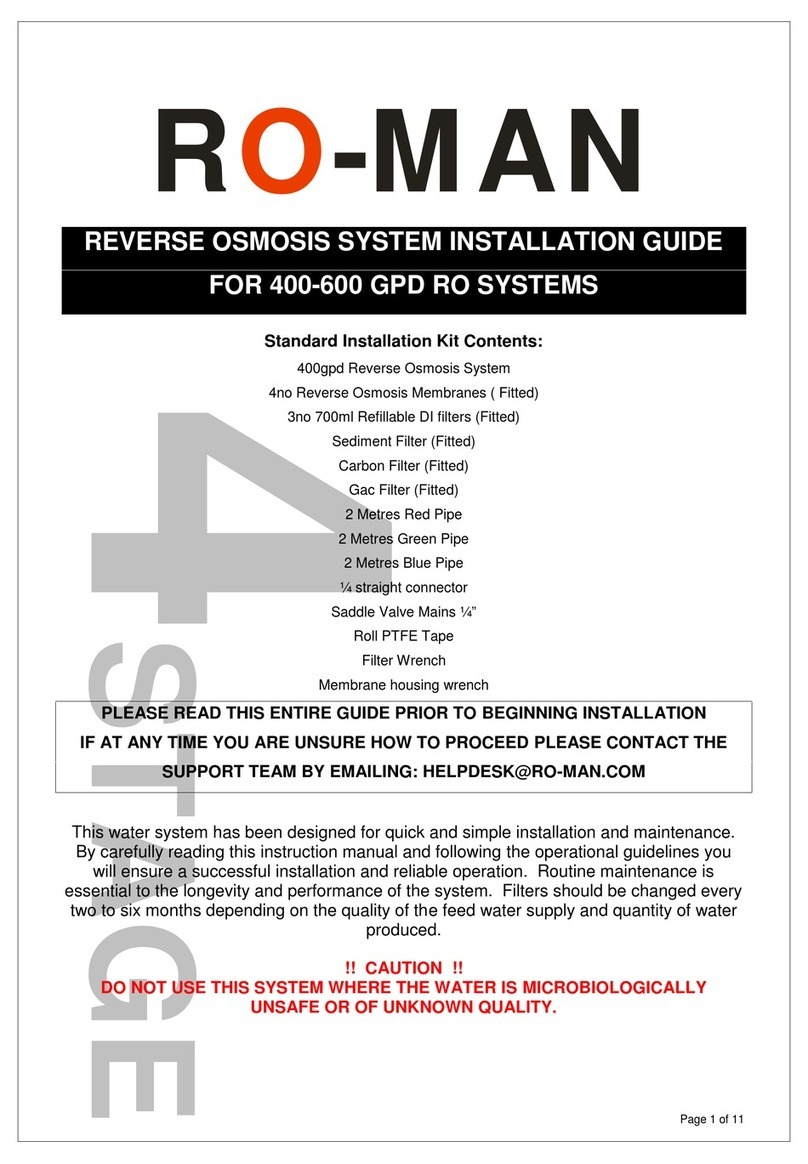
Ro-Man
Ro-Man 400-600 GPD RO Entire guide

Puretec
Puretec PureMix Z2 user guide

BOSSCO
BOSSCO Genesis Cafe Installation and service guide

Ecoplus
Ecoplus EP-1000-UV Owner's manual & installation guide
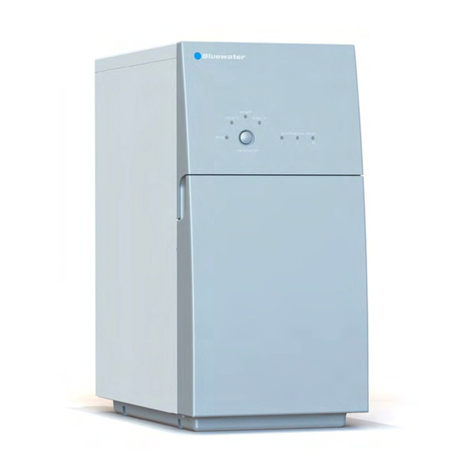
Bluewater
Bluewater Pro 400C-HF owner's manual

Ulti Mate
Ulti Mate U4 Installation, operation & maintenance manual
